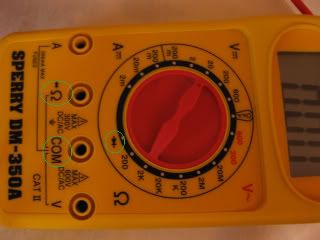arteom
1000+ Head-Fier
- Joined
- Sep 5, 2006
- Posts
- 1,357
- Likes
- 149
Hello, I am having trouble powering up my CTH, would like to let it be know that I am a bit of a DIY noob. Here is the story so far:
I recently ordered a CTH kit from Bill and went ahead to populate the board, all things seemed to go fine with a few snags here and there (mostly components placed in wrong slot), but I fixed those problems as I went along. I got near the end and had a big setback, I had installed the 47u 50v cap in the C3H slot, I thought I had followed the instruction on Alex's site, but later as I went back to it to find out what the 330u 50v cap was now highlighted in yellow and set to be in C3H. So I took the old cap out and put the new one in. For whatever idiotic reasons I had cut the leads before putting C3H in, and fear that I had cut them too short, but at this point I was optimistic that I had not.
At this point the Board powered up fine, the bi-colored LED turned green after a few moments and stayed as such after some repeated power-ups. However the problem was with the heater, tubes were glowing too hot, the heater switch had no effect on the unit. Using a 12AU7A the tube would get pretty hot after about 30 seconds and would be lighting up a bit too much, using a 6DJ8 tube would cause the tube to glow like a light bulb. I was not getting correct reading on pins 1 and 6.
I too removed the C3H cap and did indeed find that one of the leads was bent in and likely not making good contact (although I was not sure as it might have been making contact with solder that was pulled out when the 47u cap was taken off). What I did was took some leads and ran them through C3H and soldered them to the C3H cap. Being the noob that I am I accidentally hit both the leads of the power cap next to C3H, this caused some sparks to fly but the cap looks to be in good shape and from what I understand it only discharged when this happened, what I fear is that it discharged into some of the components near it. The reason I fear this is because now the LED is not turning on at all. If I place a tube in it will light up as before, but again with the LED not turning on at all.
I would really appreciate help in figuring this out, I have a digital multimeter and am ready to take some readings.
I recently ordered a CTH kit from Bill and went ahead to populate the board, all things seemed to go fine with a few snags here and there (mostly components placed in wrong slot), but I fixed those problems as I went along. I got near the end and had a big setback, I had installed the 47u 50v cap in the C3H slot, I thought I had followed the instruction on Alex's site, but later as I went back to it to find out what the 330u 50v cap was now highlighted in yellow and set to be in C3H. So I took the old cap out and put the new one in. For whatever idiotic reasons I had cut the leads before putting C3H in, and fear that I had cut them too short, but at this point I was optimistic that I had not.
At this point the Board powered up fine, the bi-colored LED turned green after a few moments and stayed as such after some repeated power-ups. However the problem was with the heater, tubes were glowing too hot, the heater switch had no effect on the unit. Using a 12AU7A the tube would get pretty hot after about 30 seconds and would be lighting up a bit too much, using a 6DJ8 tube would cause the tube to glow like a light bulb. I was not getting correct reading on pins 1 and 6.
I too removed the C3H cap and did indeed find that one of the leads was bent in and likely not making good contact (although I was not sure as it might have been making contact with solder that was pulled out when the 47u cap was taken off). What I did was took some leads and ran them through C3H and soldered them to the C3H cap. Being the noob that I am I accidentally hit both the leads of the power cap next to C3H, this caused some sparks to fly but the cap looks to be in good shape and from what I understand it only discharged when this happened, what I fear is that it discharged into some of the components near it. The reason I fear this is because now the LED is not turning on at all. If I place a tube in it will light up as before, but again with the LED not turning on at all.
I would really appreciate help in figuring this out, I have a digital multimeter and am ready to take some readings.



